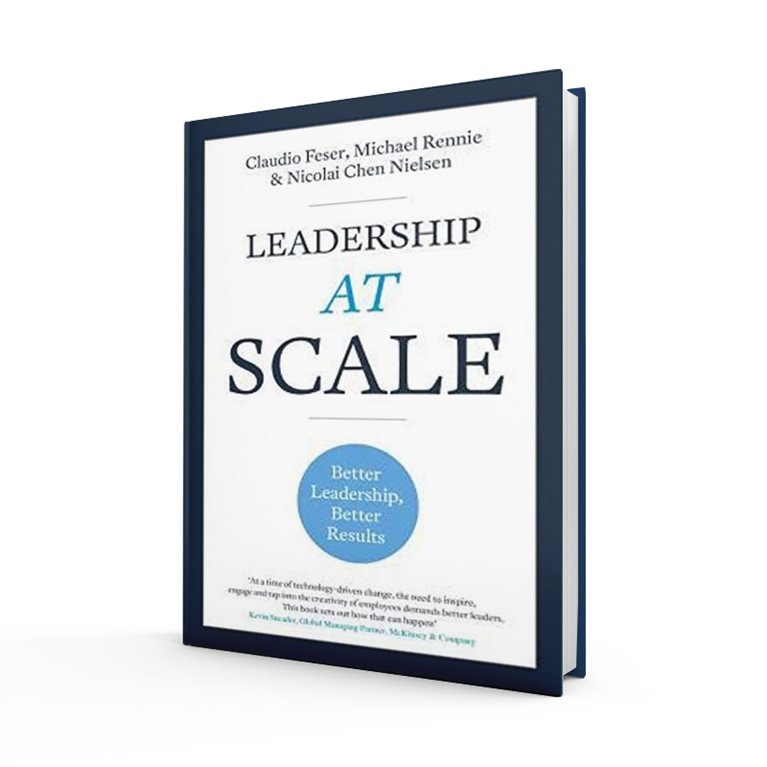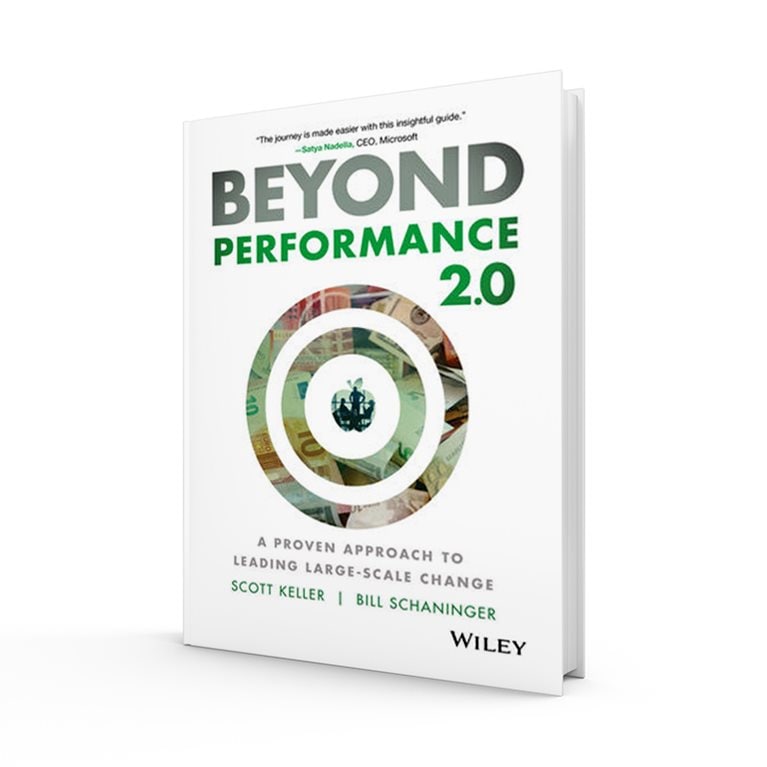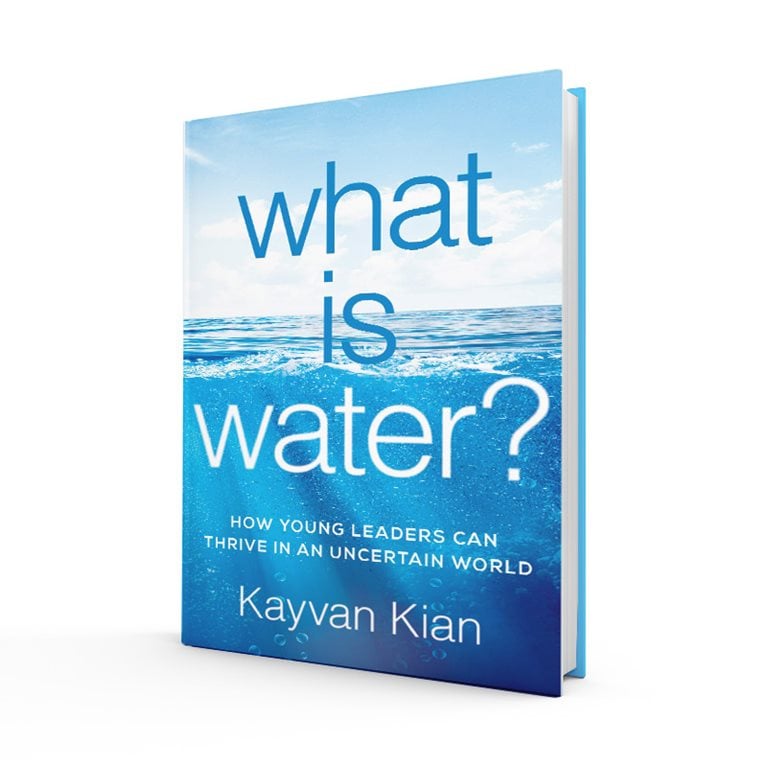It’s a new decade, and you’re committed to realizing every last ounce of your leadership potential. These titles from our Organization Practice colleagues will help. They offer masterclasses in how to develop, shape, and improve leadership within organizations of thousands or teams of one. Catch a glimpse of each in the interviews below.
Leadership at Scale: Better Leadership, Better Results
By McKinsey’s Leadership Development Practice co-founder Claudio Feser; former McKinsey Organization Practice global leader Michael Rennie; and McKinsey Associate Partner Nicolai Chen Nielsen, with whom we spoke.

Why another book on leadership?
There are so many different definitions of what leadership even is. Is it a mindset? Is it about outcomes? It may be a bit of both.
In our book, we’ve defined leadership as a discrete set of observable behaviors that are highly context-dependent. What works in one organization can be very wrong for another.
We also believe the current understanding around leadership is limiting. People often believe that leadership qualities are innate, that they can’t be taught. If that were true, there would be a finite number of leaders. We don’t believe that’s the case.
Furthermore, we believe it’s harmful for organizations to limit their own pool of potential leaders. We believe that organizations can and should build a sizeable cadre of leaders.
In our book, we show that organizations that build a critical mass of leaders tend to outperform those that focus on the very few. We’re dedicated to developing a large number of leaders for every organization.
How many good leaders does an organization need?
Depending on the organization, it could be up to thousands of people.
Leadership at scale is about more than the CEO. It’s about the team leaders, department chiefs, and division heads all becoming better, more effective leaders. When that happens, it’s reflected in the effectiveness of the organization as a whole. An organization is merely the sum of behaviors of the people within it.
What we find is that you need to engage a critical mass of what we call “pivotal influencers,” people within the organization who are respected by their colleagues, regardless of their title. In practice, we find that if around five to 15 percent of the pivotal influencers can change the way they lead, that’s enough to affect the broader organization.
On top of that, the thousands upon thousands of people who aren’t in formal leadership programs should still have a shared understanding of what great leadership looks like. Ask ten people for their definition of leadership and they’ll give you ten different answers.
An organization can’t build toward anything without that shared understanding. With leadership, we can break it down to a set of behaviors, which are easier and more practical to define than any sort of intrinsic characteristics. This makes it easier for people to understand and aspire to, no matter their position in an organization.
Why should readers invest their time in this book?
CEOs ask us something similar all the time: can they really afford to invest their time and resources into a program to get to leadership at scale?
What we know is that for organizations going through a transformation program, investing in leadership development will make them more than two times likelier to succeed than if they don’t.
To your question, how you invest your time is critical. I would encourage people to view the choice to read our book not as a “this or that” but as a “this and that,” creating the space in their day to enjoy the latest bestseller AND hone their leadership chops.
Beyond Performance 2.0: A Proven Approach to Leading Large-Scale Change
By McKinsey Senior Partners Scott Keller and Bill Schaninger, global leaders in the Strategy and Corporate Finance and Organization Practices, respectively.

What will readers find in “Beyond Performance 2.0” that they didn’t in the first edition of the book?
The first edition emphasized what a healthy organization looks like and then described the change management process necessary to get there. The emphasis of “Beyond Performance 2.0” is on the change management process itself.
We’ve also built in all of our learnings over the past decade, during which our research base has significantly expanded. It now includes over five million inputs from over 2000 companies around the world.
Finally, we’ve reformatted the book to be a practical step-by-step guide for change leaders who are serious about beating the odds of success. And those odds aren’t great: something like 70 percent of companies that attempt a transformation of some kind end up failing at it.
What makes an organization healthy?
A healthy organization works together effectively in pursuit of a common goal. Healthier companies perform better, to the tune of three times higher total returns to shareholders and two-and-a-half times more returns on invested capital.
We measure health in relation to nine outcomes, including things like direction, accountability, and motivation along with the 37 management practices that drive those outcomes, which include strategic clarity, role clarity, consequence management, and so on.
Why is change management so hard?
Organizations don’t change, people do. So, to the extent that you can help people change, you can also help organizations change. But that’s not easy to do.
There’s good news for leaders, however. Over the past few decades, psychology has shown us all how social, cognitive, and emotional biases systematically keep us from making good decisions, even though our rational mind tells us they shouldn’t. Leaders who understand this can turn roadblocks into powerful change accelerants.
The field of economics has been transformed by such learnings with the advent of behavioral economics. Yet the field of change management hasn’t yet fully embraced them. That’s something we hope to change.
Some people likely won’t want to change. What should leaders do then?
The first step is to uncover the root cause of such resistance, which is typically related to skill sets—asking people to do what they don’t know how to do—or mindsets, people believing that something about the change program isn’t possible.
From there, we again draw from research in cognitive and social psychology, which shows that there are four main levers that leaders can use to overcome resistance.
The first is creating understanding and conviction, to get “I know what is expected of me, I agree with it, and I want to do it” from everyone in your organization. The second is providing reinforcement from formal mechanisms, in which the organization’s formal mechanisms reinforce the shifts in mindsets and behaviors that workers are being asked to make. The third is increasing confidence and skills, getting people to a place where they can think, “I have the skills and safe places necessary to practice thinking and behaving in the new way.”
Finally, there’s role modeling, where people see their leaders and respected colleagues, and take their cues about thinking and behaving in the new way from them. As you can see, a winning strategy depends on our understanding of people: what motivates us, what we desire, what we believe.
What is Water? How Young Leaders Can Thrive in an Uncertain World
By McKinsey Organization Practice Consultant Kayvan Kian.

What’s the central argument of “What is Water?”
In an increasingly complex world, a thriving life depends on recognizing what you can control and what you can’t.
You talk a lot about the context for young people coming into leadership roles today.
Many young people feel overwhelmed by the complex and rapidly changing world they have inherited. I’ve heard an acronym to describe it: VUCA – volatile, uncertain, complex, and ambiguous.
Focusing on the things people can’t control can wear them down. I’ve seen that happen firsthand. So I created a program called the Young Leaders Forum (YLF), a McKinsey Academy program for client leaders in their 20s and 30s, to show people how to identify the factors they actually can control.
Tell us about the program. What are you seeing? And what kind of impact is it having?
I started the YLF to help people understand the benefits of refocusing on the things that they can control on the job and in life generally. This skill frees up emotional energy and time to focus on the projects that mean the most to them.
So far, we’ve hosted over 50 forum events worldwide, with more than 2,000 participants. The response to our events has been overwhelmingly positive, and I’ve always wanted to make this knowledge accessible to those who can’t attend YLF. That played a major role in my decision to write this book.
Do you think young leaders today are different from previous generations or is it, again, more about the context they face?
I wouldn’t say that people have changed. There are many things that remain constant among every generation: a desire for meaning and to use their strengths, for instance.
When editing the book, I got a lot of input from senior leaders, even retired leaders, saying, “Oh I wish I could have read this earlier in my career.” They had weathered their respective storms, but even looking back now they can see how they would have benefited from understanding how to focus on the things that matter. In that sense, the things I discuss in the book are universal across generations.
However, I’d say that even since I joined McKinsey in 2007, the environment that these young leaders face – the complex, fast-changing world – has made the concepts in the book more of a necessity rather than a luxury.
Finally, what’s the story behind the title of your book?
It was inspired by David Foster Wallace's commencement speech at Kenyon College in 2005. It's about the importance of being aware of your context – and how hard that actually is.
In the speech, he shares an anecdote where an older fish asks two younger fish, “Morning! How’s the water?” One of the younger fish asks the other, “What is water?” I think it fits.